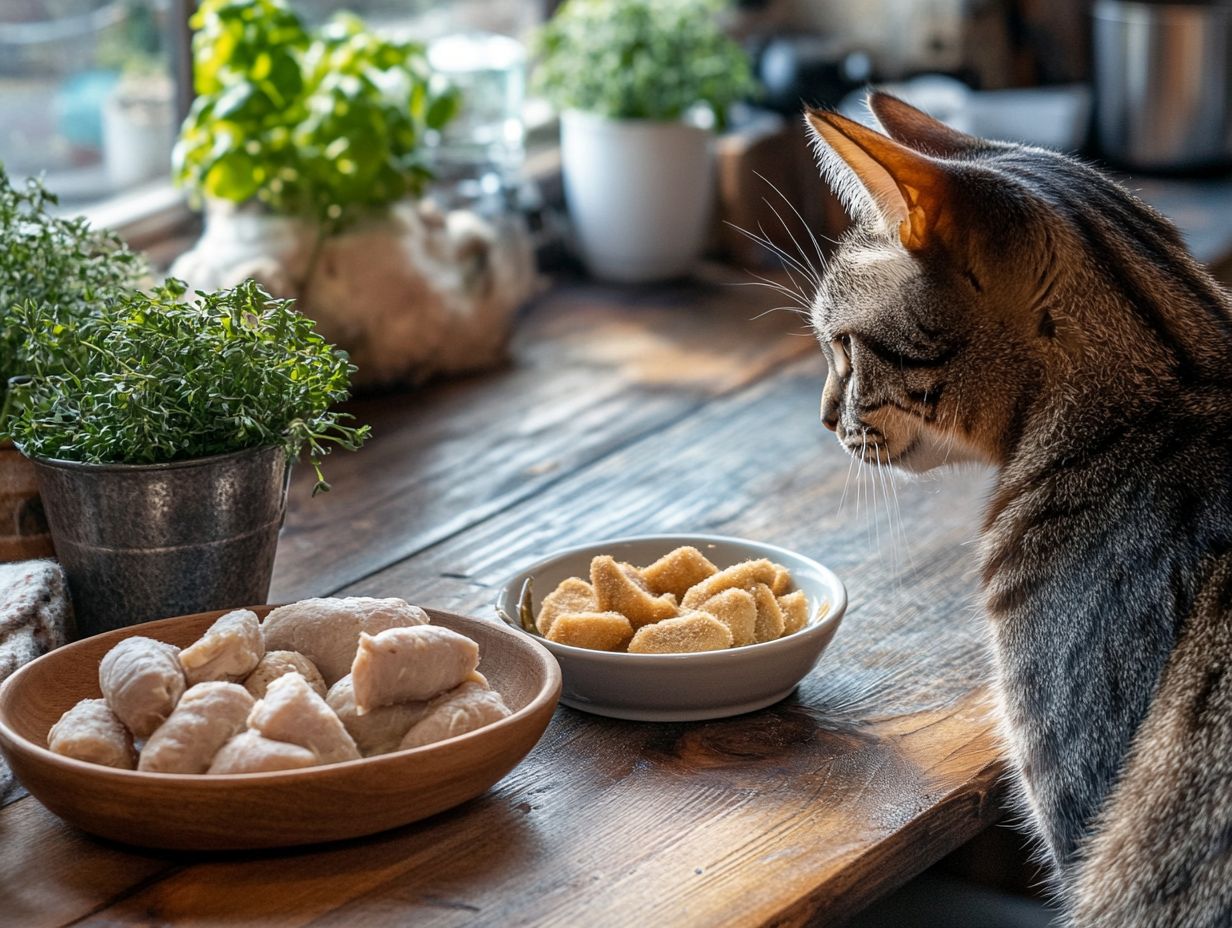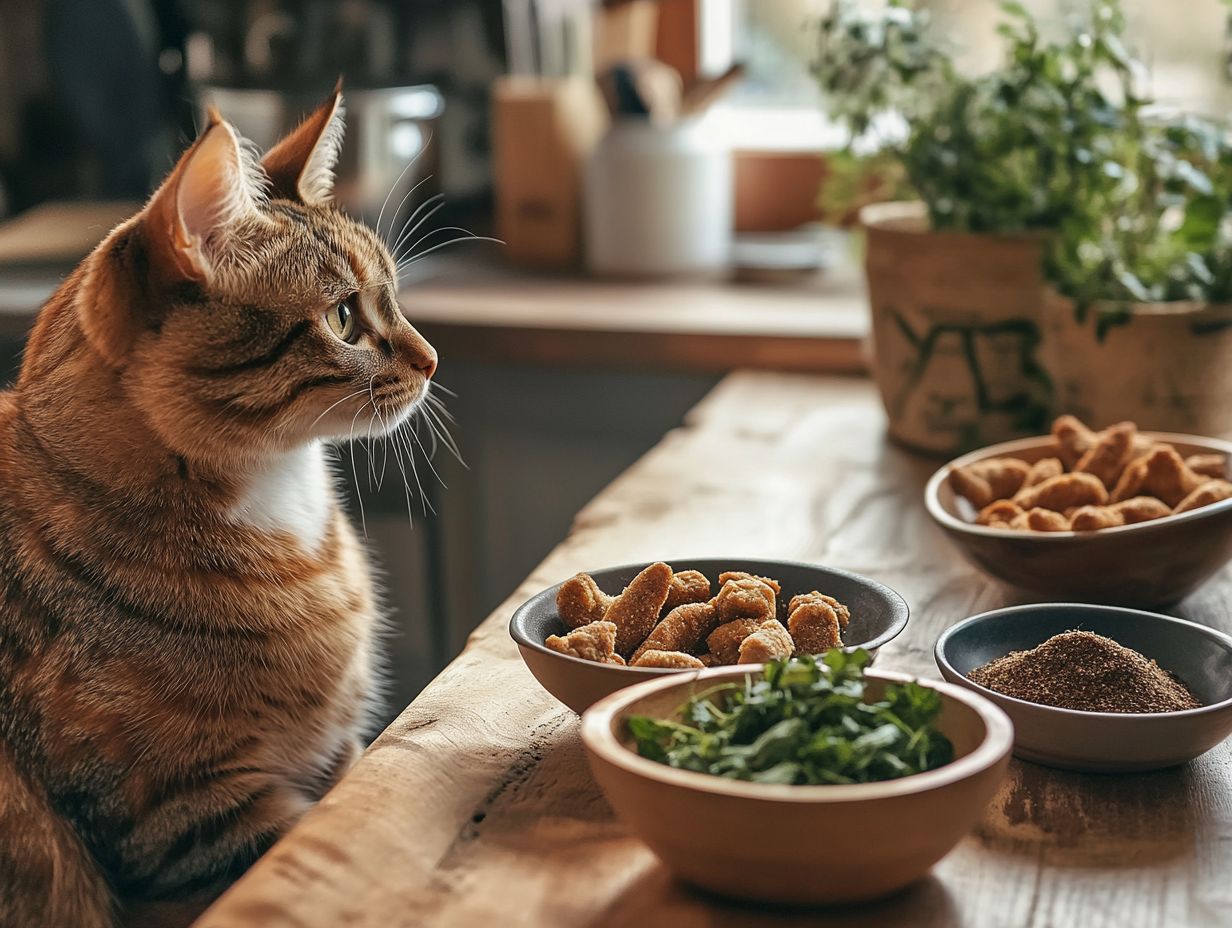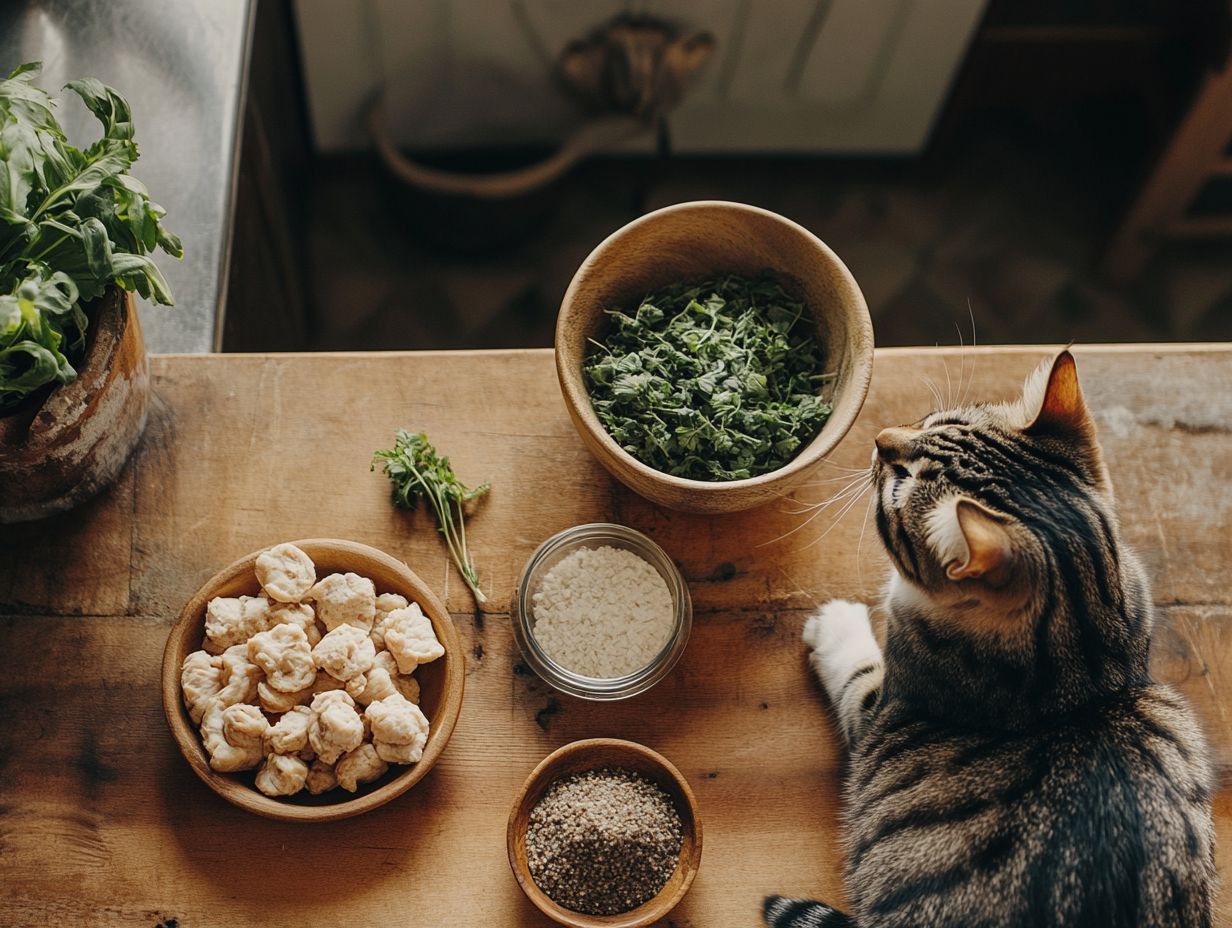Cats deserve the best, and what better way to show your furry friend some love than by making homemade treats? These goodies are not only healthier and free from harmful additives, but they also allow you to customize flavors according to your cat’s preferences.
Discover the many benefits of homemade treats, learn which ingredients to avoid, and find easy, step-by-step recipes. This guide also includes proper storage techniques and nutritious alternatives to traditional snacks.
Your cat’s taste buds are sure to be in for a delightful surprise!
Why Make Homemade Treats for Your Cat?

Making homemade treats for your cat allows you to control the ingredients and better cater to their individual taste preferences and dietary needs. By preparing snacks from scratch using natural, cat-friendly ingredients, you can offer a variety of delicious and nutritious options that enhance your feline’s overall health and well-being.
This ensures that your kitty enjoys gourmet snacks without the harmful additives commonly found in pre-packaged foods. Additionally, creating these simple cat recipes is a rewarding bonding experience, giving you the opportunity to engage in creative cooking and explore a wide range of vet-approved recipes specifically designed for optimal pet nutrition.
Benefits of Homemade Treats
Homemade cat treats offer numerous benefits, including the preparation of healthy snacks made with natural ingredients tailored to your cat’s dietary needs. By using high-quality, cat-safe ingredients, you can create nourishing treats that promote your cat’s health while avoiding the unhealthy additives often found in commercial options.
These vet-approved recipes allow you to customize snacks according to your cat’s preferences, whether they enjoy fish treats or chicken bites, thereby enhancing their diet and providing reassurance about their nutritional intake.
Making homemade treats also gives you greater control over the ingredients, significantly reducing the risk of allergens that may be present in commercially prepared products. This is especially beneficial for cats with allergies or specific dietary requirements, as customizing these treats ensures they receive only the highest quality, allergen-free ingredients.
Additionally, by incorporating essential nutrients into these treats, pet owners can further support their cat’s well-being by aiding digestion and promoting a balanced diet.
Ingredients to Avoid in Cat Treats

When selecting cat treats, it is important to avoid ingredients that can be harmful to your cat’s health or trigger food allergies. Certain common additives and fillers found in commercial cat treats can lead to digestive distress, particularly in cats with sensitive stomachs.
Understanding which ingredients to avoid will help ensure that the snacks you prepare for your pet are both safe and healthy. This includes steering clear of artificial flavors and preservatives, as well as certain human foods that may be harmful to cats.
Instead, focus on incorporating safe herbs for cats and other nutritious ingredients.
Harmful Ingredients to Watch Out For
Cat owners should be aware of several harmful ingredients when selecting or making treats for their cats. Certain ingredients, such as chocolate, onions, garlic, and some artificial additives, can be toxic to cats and may lead to adverse reactions. Fillers and preservatives that offer little or no nutritional benefit should also be avoided.
By understanding which ingredients are harmful and opting for sugar-free cat treats and natural alternatives, owners can ensure that their homemade treats are both safe and enjoyable for their cats.
For instance, chocolate contains theobromine, which is particularly dangerous for cats and can cause symptoms like vomiting, increased heart rate, and even seizures. Similarly, onions and garlic contain compounds that can destroy red blood cells in cats, leading to anemia. Artificial sweeteners like xylitol are also toxic to cats and can result in life-threatening drops in blood sugar levels.
To avoid these harmful ingredients and promote their cats’ overall health, cat owners should read labels carefully and research the ingredients in their recipes. Safe alternatives, such as pumpkin and chicken broth, can delight their cats’ taste buds while providing essential nutrients without posing any risks.
Simple Homemade Cat Treat Recipes

Homemade cat treat recipes are simple to prepare and enable you to provide your cat with delicious and nutritious snacks tailored to their tastes. Easy recipes for fish treats and chicken bites ensure that your feline enjoys a variety of flavors while benefiting from wholesome DIY cat treats made with natural ingredients.
You can quickly whip up cat treats using pantry staples. A homemade cat treat recipe can include baked cat biscuits or treats specifically designed for kittens, depending on the owner’s preference. This flexibility allows for quick and easy cat treat recipes to be made in numerous ways.
Easy and Healthy Treats to Make at Home
Creating easy and healthy treats at home for your cat can be a rewarding experience, allowing you to experiment with a variety of cat-friendly ingredients and flavors that your feline friend will adore. From nutritious options like pumpkin cat treats to savory delights such as salmon bites, the key is to ensure that each recipe meets your cat’s health needs. Quick and simple recipes can save time while providing your kitty with wholesome, homemade food that satisfies their dietary requirements.
Exploring different variations of cat treats can help you discover your cat’s favorite flavors, turning treat time into a special occasion. When making these delightful snacks, consider incorporating ingredients like chicken, oats, or sweet potatoes, which not only offer health benefits but are also generally well-received by cats. For instance, chicken provides high-quality protein that is essential for maintaining muscle health, while oats can aid in digestion.
Encouraging experimentation with flavors not only adds enjoyment to the treat-making process but also accommodates any dietary restrictions or preferences your feline may have. Remember, the possibilities are endless, allowing pet owners to customize these recipes based on their cat’s unique tastes and nutritional needs, resulting in treats that are both delicious and beneficial.
How to Store Homemade Cat Treats

Proper storage of homemade cat treats is essential for preserving their freshness and ensuring your pet’s health, especially when natural ingredients are used in the recipes. By following appropriate storage tips, you can extend the shelf life of these snacks and prevent spoilage or loss of flavor.
Whether you opt for freeze-dried treats or store them in an airtight container, understanding best practices for homemade cat food safety is crucial to keeping your treats well-preserved and safe. Taking the time to store homemade pet snacks correctly guarantees that they remain safe, healthy, and enjoyable for your cat.
Proper Storage Techniques to Keep Treats Fresh
To prevent spoilage, proper storage of homemade cat treats is essential, especially for recipes that use kitten-safe ingredients or dehydrated components. Keeping these treats in a cool, dry place helps retain their texture and flavor. Using sealable containers can prevent exposure to moisture and odors. It is also important to know how long different types of treats last, as this aids in managing supplies and ensuring your kitty always has the freshest options. Labeling your cat treats with the date they were made is crucial for maintaining homemade cat food safety.
Different types of treats require specific storage methods; for example, crunchy biscuits are best kept in sealed jars to maintain their crispness, while soft treats should be stored in the refrigerator to extend their shelf life.
The most common signs of spoilage include mold, discoloration, and changes in texture, all of which can develop more rapidly in high humidity environments. Understanding how temperature and moisture levels affect the quality of treats enables caregivers to make informed decisions about the size of batches to prepare and how quickly the treats will be consumed.
Alternatives to Traditional Treats
Exploring alternatives to traditional treats can introduce your cat to a new category of healthy snacks that cater to its individual needs and preferences. Gourmet cat snacks, made from natural ingredients, allow cats to enjoy low-calorie treats that are also delicious.
Whether you opt for the best freeze-dried cat treats, innovative cat snacks, or simple DIY pet treats, these healthy alternatives offer a variety of tasty options that are safe and beneficial for your pet’s health. This approach not only enhances your cat’s diet but also enables you to create customized treats for even the fussiest eaters.
Healthy Snack Options for Cats
There are numerous healthy snack options available for cats, including nutritious recipes you can create at home for picky eaters or those with specific nutritional needs. Incorporating safe herbs for cats, such as catnip and parsley, can enhance the flavor and enrichment of homemade cat treats. By exploring various types of cat treats, you can develop healthy versions of the snacks your cat already enjoys. Whether your feline friend prefers crunchy biscuits or soft cookies, offering a range of healthy snack options is essential.
Examples of healthy ingredients include oats, pumpkin, and chicken.
Healthy Snack Options for Cats Pros of Homemade Snacks:
- No Additives: You can ensure that your cat is not consuming any preservatives or artificial ingredients.
- Quality Control: You have the ability to select the highest quality and safest ingredients.
- Flexibility: You can create snacks in various shapes and sizes that will entice your cat to eat.
- Variety: You can offer your cat a wider range of healthy snack options.
Cons of Homemade Snacks:
- Time-Consuming: Preparing homemade snacks requires time and effort.
- Potential for Harmful Ingredients: Ingredients that are safe for humans might be toxic to cats.
- Nutritional Balance: It can be challenging to ensure that your homemade snacks are nutritionally balanced.
Source: Healthy Snack Options for Cats.
